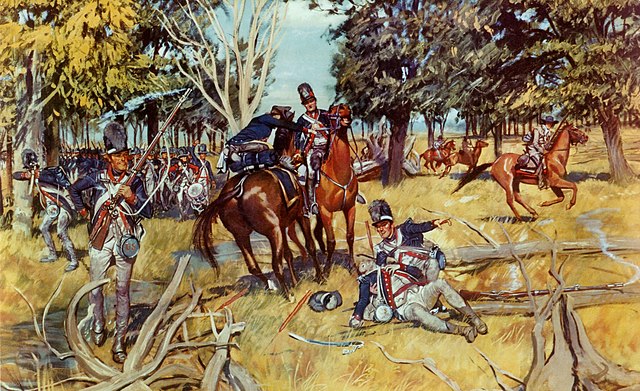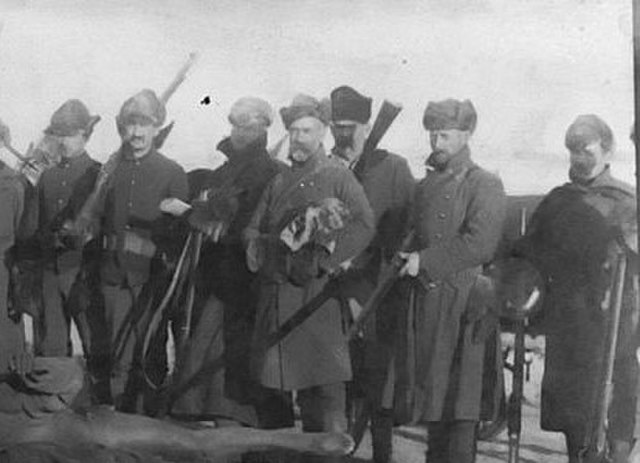Legion of the United States
The Legion of the United States was a reorganization and extension of the United States Army from 1792 to 1796 under the command of Major General Anthony Wayne. It represented a political shift in the new United States, which had recently adopted the United States Constitution. The new Congressional and Executive branches authorized a standing army composed of professional soldiers rather than relying on state militias.
Major General Anthony Wayne with the Legion of the United States, 1794
Monument at the site of Legionville
General Anthony Wayne and his Legion of the United States, depicted advancing along the Maumee River prior to the August 1794 Battle of Fallen Timbers
Major General Hugh Brady was a lieutenant in the Legion of the United States at Fallen Timbers.
The United States Army (USA) is the land service branch of the United States Armed Forces. It is one of the eight U.S. uniformed services, and is designated as the Army of the United States in the U.S. Constitution. The Army is the oldest branch of the U.S. military and the most senior in order of precedence. It has its roots in the Continental Army, which was formed on 14 June 1775 to fight against the British for independence during the American Revolutionary War (1775–1783). After the Revolutionary War, the Congress of the Confederation created the United States Army on 3 June 1784 to replace the disbanded Continental Army. The United States Army considers itself a continuation of the Continental Army, and thus considers its institutional inception to be the origin of that armed force in 1775.

The storming of Redoubt No. 10 in the Siege of Yorktown during the American Revolutionary War prompted Great Britain's government to begin negotiations, resulting in the Treaty of Paris and Great Britain's recognition of the United States as an independent state.
General Andrew Jackson standing on the parapet of his makeshift defenses as his troops repulse attacking Highlanders during the defense of New Orleans, the final major and most one-sided battle of the War of 1812, mainly fought by militia and volunteers.
The Battle of Gettysburg, the turning point of the American Civil War
Army soldiers in 1890








